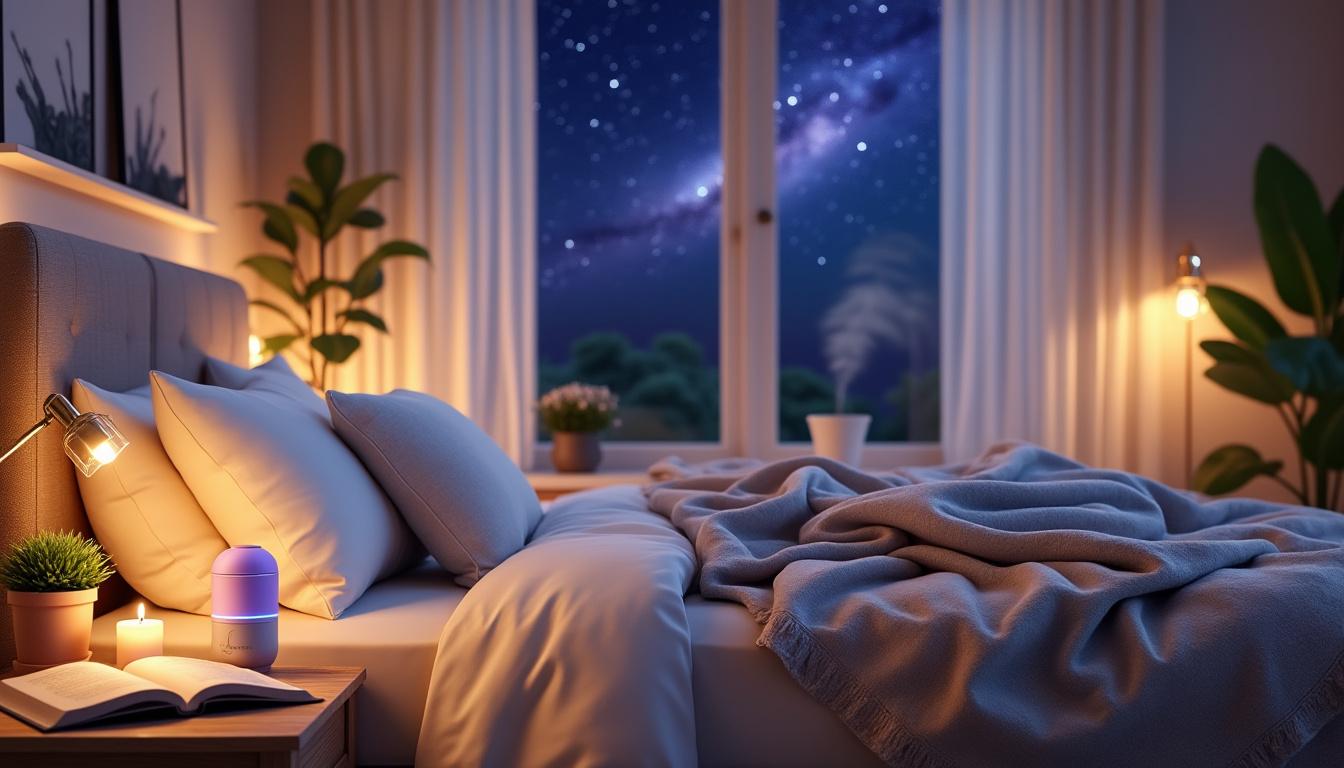In today’s fast-paced world, quality sleep remains elusive for many. Chronic stress, demanding schedules, and environmental distractions challenge even the most disciplined sleepers. Yet, science continues to reveal effective, achievable strategies for improving rest. This article delves into five proven tricks to enhance sleep tonight, blending research-backed advice with practical applications. From mastering your sleep routine to optimizing your bedroom environment, these insights offer actionable steps anyone can take to unlock better nights and more energized days.
Discovering Your Ideal Sleep Schedule for Enhanced Rest
Understanding how much sleep your individual body requires is the cornerstone of improving sleep quality. While the widely recommended eight hours serves as a useful starting point, personal needs can vary significantly. Some thrive on six to seven hours, whereas others feel best with nine. Establishing your “sweet spot” is a process of attentive self-monitoring and consistency.
To establish a reliable sleep schedule, begin by selecting a fixed wake-up time aligned with your daily obligations. Research suggests waking at a consistent time—even on weekends—helps stabilize circadian rhythms, reduces sleep onset latency, and can even contribute to healthier body weight over time. Aim to maintain your wake-up time within a 60-minute window daily for optimal benefits.
Once your wake time is set, calculate your ideal bedtime by subtracting the number of hours of sleep you aim for plus about 30 minutes to account for the average time it takes to fall asleep. For example, if rising at 7 AM and targeting 7.5 hours of sleep, your bedtime should fall between 10 PM and 10:30 PM.
Crafting a detailed sleep plan also entails minimizing variability in your bedtime and establishing a regular pre-sleep routine. Consistency in these habits signals to your brain that it’s time to slow down and prepare for rest—mitigating the disruptive impact of erratic schedules.
- Determine your ideal sleep duration by trial, starting with seven hours.
- Set and maintain a fixed wake-up time daily.
- Calculate your bedtime including a buffer for sleep onset.
- Create a consistent pre-sleep routine.
Practical examples include setting alarms that follow your natural sleep cycle and tracking sleep patterns with devices or apps that integrate into platforms offering mental health support such as those listed on this resource page. By doing so, adjustments can be data-driven and personalized to your physiological responses.
| Sleep Duration | Recommended Wake Time | Calculated Bedtime | Sleep Onset Buffer |
|---|---|---|---|
| 6 hours | 7:00 AM | 12:30 AM | 30 minutes |
| 7.5 hours | 7:00 AM | 10:30 PM | 30 minutes |
| 9 hours | 7:00 AM | 9:00 PM | 30 minutes |
Establishing such a schedule enables your body’s circadian rhythms to align optimally with environmental cues and internal processes, resulting in more rejuvenating sleep cycles. Moreover, a stable sleep routine minimizes the risk of weekday “jet lag” that can torment shift workers or those with variable schedules.
Designing a Bedroom Environment that Promotes Deep, Uninterrupted Sleep
Sleep environments constitute a pivotal aspect of sleep hygiene, actively influencing your ability to fall asleep and maintain REM cycles. The bedrooms of those who report consistently restorative sleep share several characteristics worth emulating.
A fundamental factor is maintaining an ambient temperature conducive to sleep, which research places between 60 and 70 degrees Fahrenheit. Cooler temperatures facilitate the natural nocturnal body temperature drop and support deeper restorative sleep phases. Investing in temperature-regulating mattresses such as those from Tempur-Pedic, Sleep Number, or Nectar can enhance thermal comfort through advanced materials designed to dissipate heat.
Furthermore, lighting profoundly affects circadian regulation. Ideally, bedrooms should be as dark as possible when it’s time to sleep. Blackout shades or curtains are vital for urban dwellers facing artificial street and building lights. Dim lighting during the evening hours—favoring warm, low-lumen bulbs under 450 lumens—helps simulate natural sunset conditions and primes the brain for melatonin production.
Key environmental interventions include:
- Installing blackout curtains or light-blocking shades.
- Switching to warm-hued bulbs with
- Utilizing white noise machines or ambient sound apps to mask disruptive noises.
- Regular dusting and vacuuming to reduce allergens that can impair breathing.
Pets in the sleeping environment, although comforting, may unintentionally reduce sleep quality. Providing dedicated pet sleeping areas ensures minimized disturbances due to movement or allergies. Additionally, the placement of furniture and bedroom organization impacts calmness. Maintaining clutter-free zones supported by storage solutions contributes to a cleaner mental space and physical environment.
| Environmental Factor | Recommended Practice | Benefits |
|---|---|---|
| Temperature | Keep between 60-70°F | Facilitates body temperature drop and deep sleep |
| Lighting | Use blackout shades; dim warm bulbs at night | Preserves melatonin production, circadian alignment |
| Noise | Employ white noise machines or apps | Reduces wake-up episodes |
| Allergens | Dust/vacuum regularly, use breathable bedding | Improves breathing and allergy symptoms |
Many consumers turn to innovative bedding options from brands like Purple, Zinus, Saatva, Casper, Tuft & Needle, and Helix Sleep, each renowned for their comfort and technologies tailored to promote airflow, pressure relief, and ergonomic support. Selecting mattresses and pillows that align with individual sleep postures and health needs significantly mitigates tossing and turning.
Integrating smart lighting improvements
For those interested in cost-effective but impactful upgrades, small lighting adjustments can profoundly influence sleep comfort. Resources, such as detailed guides on budget lighting upgrades, make these changes accessible without major home renovations.
Adopting Mindful Pre-Sleep Rituals to Signal Rest and Relaxation
The intentional transition into sleep often requires more than willpower—it demands behavioral patterns that encourage physiological calm. Pre-sleep routines serve as reliable cues, conditioning the brain to anticipate slumber.
A typical successful routine lasts between 30 to 60 minutes and includes calming, low-stimulation activities such as:
- Light stretching to relieve muscular tension and prevent leg cramps.
- Skin care or oral hygiene rituals that provide touch and routine comfort.
- Journaling gratitude or planning the next day to clear cognitive clutter.
- Reading non-stimulating literature to soothe mental chatter.
Bid farewell to screens 30 to 60 minutes before bed to avoid exposure to artificial blue light, which suppresses melatonin. This means turning off smartphones, tablets, and TVs. The use of apps focused on reducing anxiety and fostering self-care, such as recommended by self-care routine resources, can supplement this process.
Breathing exercises are another potent tool. Techniques like the 4-7-8 breath or equal breathing rhythms activate the parasympathetic nervous system, lowering heart rate and promoting tranquility. Aromatherapy, particularly with lavender or chamomile oils, introduced through diffusers or linen sprays, can further aid relaxation without the risks associated with medication.
- Develop fixed pre-sleep activities focused on relaxation.
- Cease bright screen usage at least 30 minutes prior to bedtime.
- Incorporate mindfulness practices such as journaling or guided imagery.
- Use essential oils documented to ease nervous system tension.
| Activity | Impact on Sleep | Scientific Rationale |
|---|---|---|
| Breathing Exercises | Reduces stress; facilitates sleep onset | Activates parasympathetic nervous system |
| Journaling Gratitude | Less worry; improved sleep quality | Encourages positive thoughts before sleep |
| Aromatherapy | Calms nerves; lowers blood pressure | Lavender and chamomile promote relaxation |
| Screen Avoidance | Preserves melatonin release; reduces alertness | Blue light suppresses sleep-inducing hormones |
Leveraging Lifestyle Choices to Support Restorative Sleep Patterns
Daily behaviors significantly influence the quality of nightly rest. This section outlines critical lifestyle factors to integrate for enduring sleep improvements.
Morning sunlight exposure is invaluable in synchronizing circadian rhythms. Those working near windows or taking brief morning walks report enhanced mood and better sleep onset at night. Vitamin D synthesis during sunlight exposure also affects neurotransmitters key to sleep regulation.
Exercise, particularly moderate-intensity aerobic activities, aids in falling asleep faster and deepens slow-wave sleep phases. Optimal timing is generally mornings or early afternoons; however, individual schedules and preferences should be considered. Avoiding vigorous late-night workouts prevents overstimulation.
Caffeine intake must be carefully managed. Metabolized over approximately six hours and sometimes as long as 12, caffeine consumed even at midday can interfere with evening sleep. Sensitive individuals may need to limit caffeine to before noon. Opting for no-caffeine alternatives in the afternoon and evening can yield noticeable improvements in sleep latency and depth.
Eating habits also play a vital role. Digestive activity can disturb sleep when meals are heavy, fatty, or spicy close to bedtime. Prefer lighter meals with sleep-supportive snacks such as bananas, kiwi, or small servings of nuts. Reducing alcohol, which fragments sleep cycles, is equally beneficial.
- Expose yourself to sunlight within 30 minutes of waking.
- Maintain consistent moderate exercise routines, avoiding stimulation near bedtime.
- Cut off caffeine by early afternoon to prevent interference.
- Choose light, easily digestible evening meals and healthy snacks.
| Factor | Recommended Practice | Reason and Benefit |
|---|---|---|
| Sunlight | Morning exposure 15-30 minutes | Regulates circadian rhythm; enhances mood |
| Exercise | Moderate cardio, preferably morning/afternoon | Promotes sleep onset and deeper sleep stages |
| Caffeine | Limit intake to before 2 PM | Reduces stimulant effects interfering with sleep |
| Diet | Light evening meals; avoid spicy/fatty foods | Minimizes gastrointestinal disruption and discomfort |
These lifestyle recommendations are further elaborated in extensive guides focusing on sleep improvements facilitated by stress reduction techniques, such as those found at reduce anxiety without medication.
Managing Stress and Mental Clutter to Unlock Sound Sleep
Stress stands as one of the predominant disruptors of deep and consistent sleep. The reciprocal relationship between insufficient sleep and increased stress creates a challenging cycle. Effective stress management is therefore integral to enhancing rest.
Establishing clear mental boundaries—such as allocating a “cool down” period after work—facilitates transitioning from stimulating activities to relaxation. Activities like journaling daily accomplishments and worries, practicing mindfulness meditation, or even engaging in light gentle stretches ease mental tension.
Aromatherapy continues to surface as an effective adjunct; scents such as lavender reduce sympathetic nervous activity, while guided imagery distractions help disengage racing thoughts. Importantly, focusing on relaxation techniques rather than forcing sleep helps alleviate performance anxiety related to bedtime.
When sleep proves elusive, healthy strategies involve leaving the bed to engage in low-stimulation activities until natural drowsiness returns. Sleep tracking devices or diaries assist in recognizing patterns linked to stress triggers or environmental factors. Consulting healthcare professionals is prudent when dealing with persistent insomnia or potential sleep disorders.
- Set aside dedicated time to unwind post-work.
- Practice journaling to externalize worries and foster gratitude.
- Use mindfulness and guided imagery to clear mental clutter.
- Avoid stressing over sleep quantity; focus on relaxation.
- Leave the bed if unable to sleep, engaging in quiet activities.
| Strategy | Effect on Sleep | Underlying Mechanism |
|---|---|---|
| Journaling Gratitude | Enhances sleep quality | Shifts focus to positive thoughts; reduces worry |
| Guided Imagery | Calms the mind | Redirects attention away from stressors |
| Mindfulness Meditation | Reduces insomnia symptom severity | Balances autonomic nervous system |
| Bed Exit Strategy | Prevents frustration-induced wakefulness | Breaks cycle of negative sleep associations |

